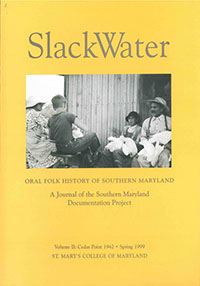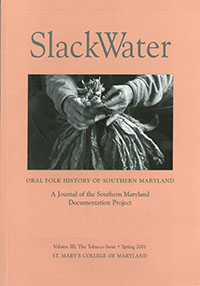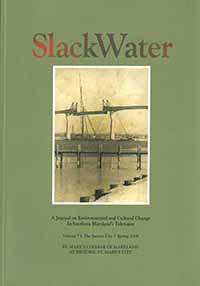Why Savon?

In 1976, the St. Mary’s County Creative Art Forum hosed a series of events inviting people to examine the impact of Lexington Park–the “Instant City”–on the county. Susan Jones, an artists who has come to St. Mary’s County to attend college, created a silk-screened print of perhaps the least celebrated landscape in Lexington Park, the 24-hour Savon Gas Station located on Great Mills Road where the CVS now stands. Jones found the Savon’s neon facade a sign not just for cheap gas, 24 hours, but a sign of the times ahead, an age prefiguring Sheetz and Wawa. In this essay, N. Lynn Erwin, who worked at the Creative Arts Forum in the late ‘70s, contemplates the meaning of Savon Gas.
It was a small, squat building, insignificant in size, not adorned to catch the eye or the imagination. The gas pumps in front of the small building were equally homely: non-descript and utilitarian at best, without even the flair of an overhang to protect the all-important customer. But it was not these parts, nor the sea of asphalt that tied it together, that caught the passing eye. What caught the eye was the mammoth SAVON sign.
The huge sign was clearly designed by a corporation whose idea of branding was “one size fits all.” The sign, composed of neon-lit, vertically-stacked letters rising as high as the nearby telephone poles, was meant to be visible from interstate highways. Instead, it was situated on Great Mills Road in 1960s Lexington Park, the main street of a small rural town, pitched incongruously among grocery stores, small shops, and homes. By day, the sign hummed and hovered in mid-air with its large metal legs grounded by bolts in concrete and weeds. By night, the light permeated the landscape and seemed to burn itself upon the retina. It was a Hopper skyline without the context of poetry.
The housing for the gas station operations consisted of one very small building with two seedy restrooms around back and a solitary phone booth—big corporation’s paltry nod toward human frailty. Unlike gas stations today, there was nothing sold inside—no newspapers, burritos, candy, not even a hot plate with a coffee pot on it. Savon’s sole purpose was to take in money and drop it at regular intervals in a protected bank slot.
That the building was big enough to secure one or two people from bad weather seemed like a reluctant corporate concession. In the 1960s, architect Robert Venturi dubbed similar roadside establishments “decorated sheds,” artifices whose primary purpose was to attract motorists’ attention from the road. The “large-scale decorations” were bold, oversized objects, sometimes symbols, sometimes signs, that drivers “read.” Venturi called them “$10,000 buildings with $100,000 signs.”
In the mid-1970s, Americans saw their first major recession in 16 years. Though brief, it was characterized by sharply rising oil and gas prices, gasoline rationing, and, for the first time, national discussions about the cost and impact of oil on our daily lives. Unemployment rates rose as high as 9% before beginning to taper off in late 1975. In St. Mary’s County, when the job market collapsed, there was always one ad, and sometimes only one ad, that appeared in the local help wanted section, “Shift workers needed at Savon Gas Station; minimum wage; no skills necessary.”
Savon was one of St. Mary’s County’s earliest 24-hour, seven-day-a-week commercial establishments. The drumbeat of commerce answered, or created, the call for immediate and constant gratification. Savon arrived sandwiched between the era of friendly, family-owned “service stations” and the monstrous quickie marts of the next decades. Today’s gas stations, oddly enough, no longer offer service to one’s car, but nevertheless supply the public with all the needs of a fast-moving populace—hot food, fuel, banking, photos, healthcare needs, and global information via newspapers and slick magazines—all in a five-minute stopover. Savon belonged to a new era where anonymity was acceptable, especially in exchange for “the cheapest gas in town.” Many, if not most, gladly traded the familiarity of family-owned stations for convenience, speed, and savings. Like the old-fashioned soda jerk, the smalltown mechanic who knew you and your family was more often seen on TV shows that catered to the American desire for “home” as it used to be than at the local service station.
And so when Sue Jones’ poster of the Savon Gas Station popped up in 1976, many people’s knee-jerk question was “Why Savon?” But the act of choosing that which had always been present but invisible lent it an immediate cache. Where other cities had their own grand iconic images—bridges, towers, skyscrapers—we suddenly had Savon. The image took up as much space physically as it did in our own psychic landscape. People smiled when they saw the poster. Savon. Suddenly, the artistic rendering of the local gas station did what the corporation could not, or would not do. It created a feeling of commonality, an unspoken, tongue-in-cheek, “This is who we are.”
This was not, of course, an original idea. Artists like Duchamp, Warhol, and Lichtenstein had plumbed the zeitgeist between art and commerce for years. The commonplace, the ubiquitous, the banal had been employed by artists and corporations alike. It is not to be confused with nostalgia. No one hung out at Savon; and you would be hard pressed to find someone, then or now, who would campaign to bring Savon back. But the artwork served to cement, name, and preserve an iconic image. It validated our townscape as it condemned it. It is these ironic conflicts that crop up when townspeople move to gentrify—that which is hideous and removed often leaves an odd void, a sense that some small measure of identity has been lost by pressing forward toward a unified beauty. Why Savon? Indeed.








